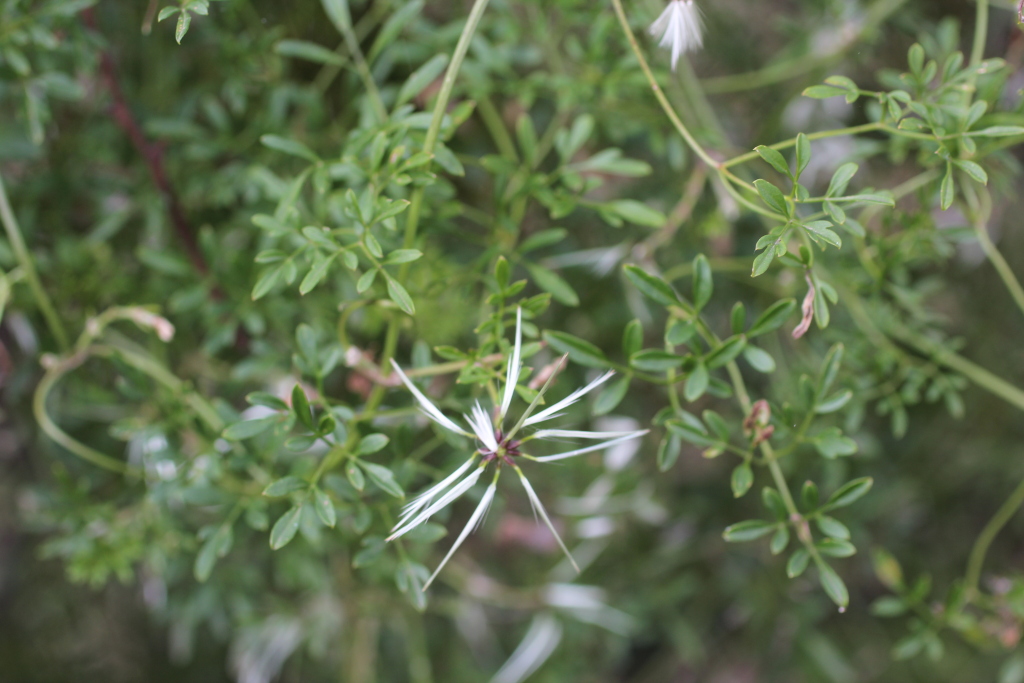Clematis leptophylla
(F.Muell.) H.EichlerDioecious, woody climber or trailer, ascending to c. 5 m high. Leaves opposite; adult leaves usually triternate (with 18–36 leaflets); petioles often twining or twisting; ultimate leaflets linear to obovate, finally glabrous; margins often 3-lobed; terminal leaflet 0.5–1.5(–2.5) cm long, 1–3 mm wide. Flowers in short axillary or terminal panicles. Sepals white to pale yellow, oblong to narrowly ovate, c. 1–2 cm long, glabrous on upper surface, pubescent below; male flowers with anthers 0.5–1 mm long with no terminal appendage; female flowers usually with a few staminodes. Achenes flattened, ovate, 4–5 mm long, glabrous, margins thickened and warty; awn plumose, 3–5 cm long. Flowers Jun.–Aug.
Brid, VVP, MuF, GipP, CVU, NIS, EGU, HSF, HNF, MonT, VAlp. Occasionally in drier, usually rocky, forest and woodland communities in the east (e.g. upper catchments of the Tambo, Mitchell, Snowy and Genoa rivers, Corryong area), occasionally ascending to the alps (e.g. at Snowy Bluff north of Licola).
This species is closely related to C. microphylla and C. decipiens, and was previously regarded as a variety of the former.
Walsh, N.G. (1996). Ranunculaceae. In: Walsh, N.G.; Entwisle, T.J., Flora of Victoria Vol. 3, Dicotyledons Winteraceae to Myrtaceae, pp. 35–63. Inkata Press, Melbourne.
 Spinning
Spinning


